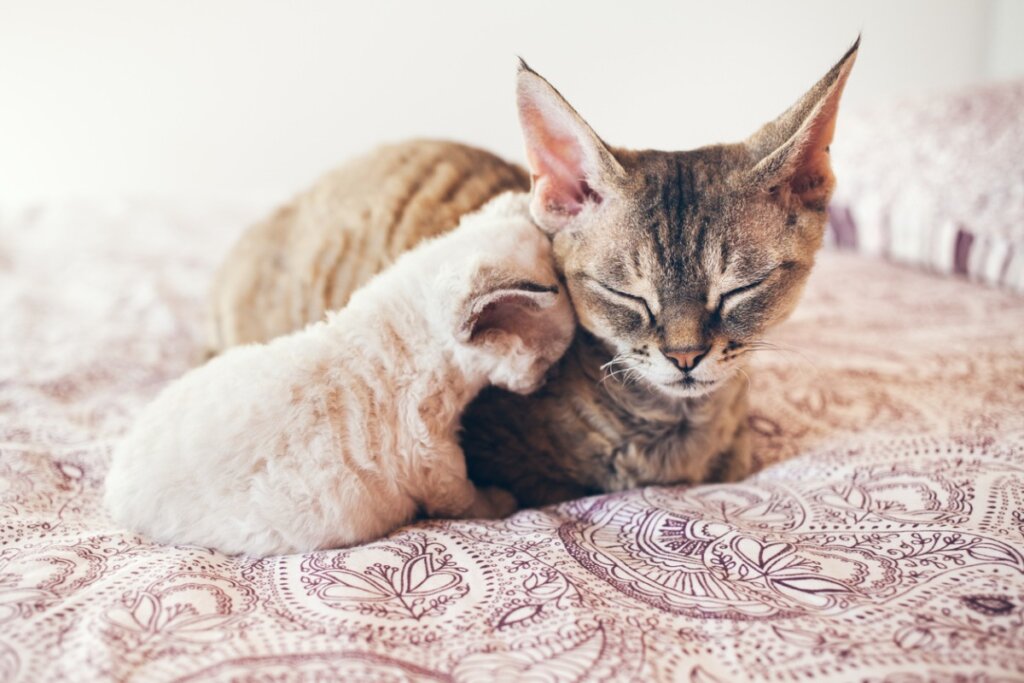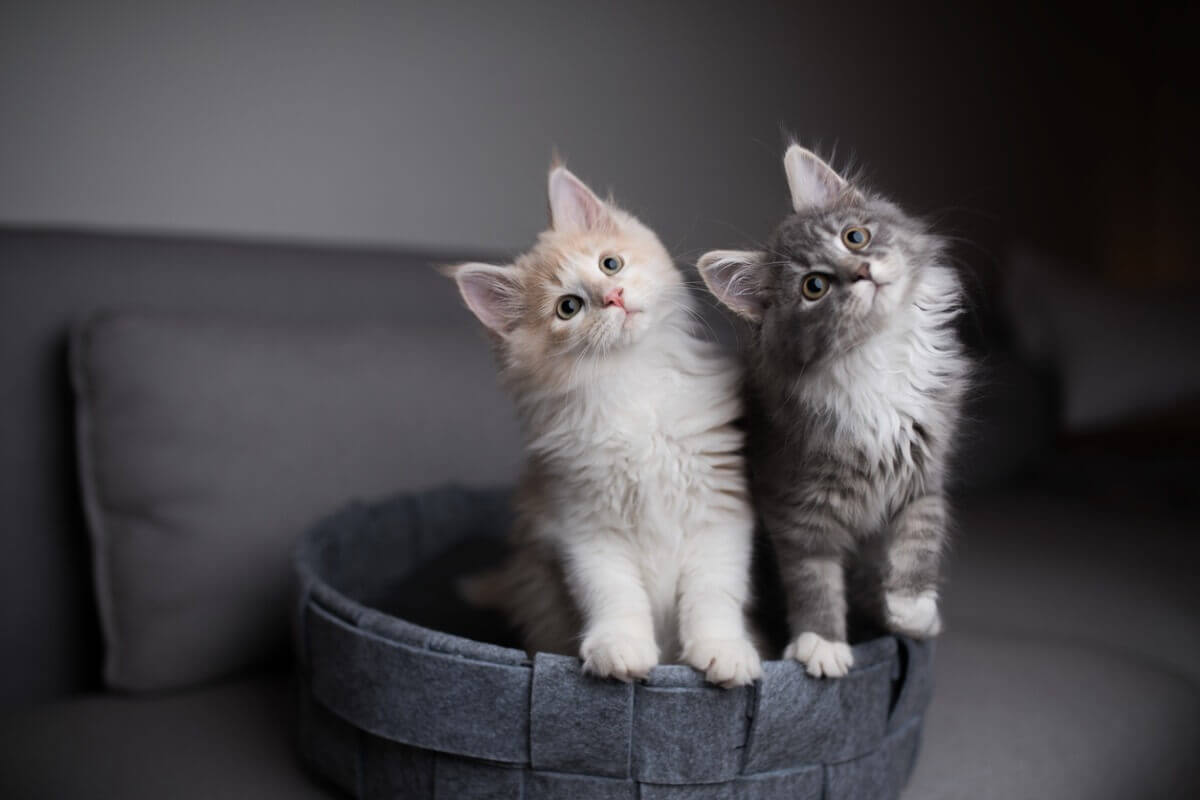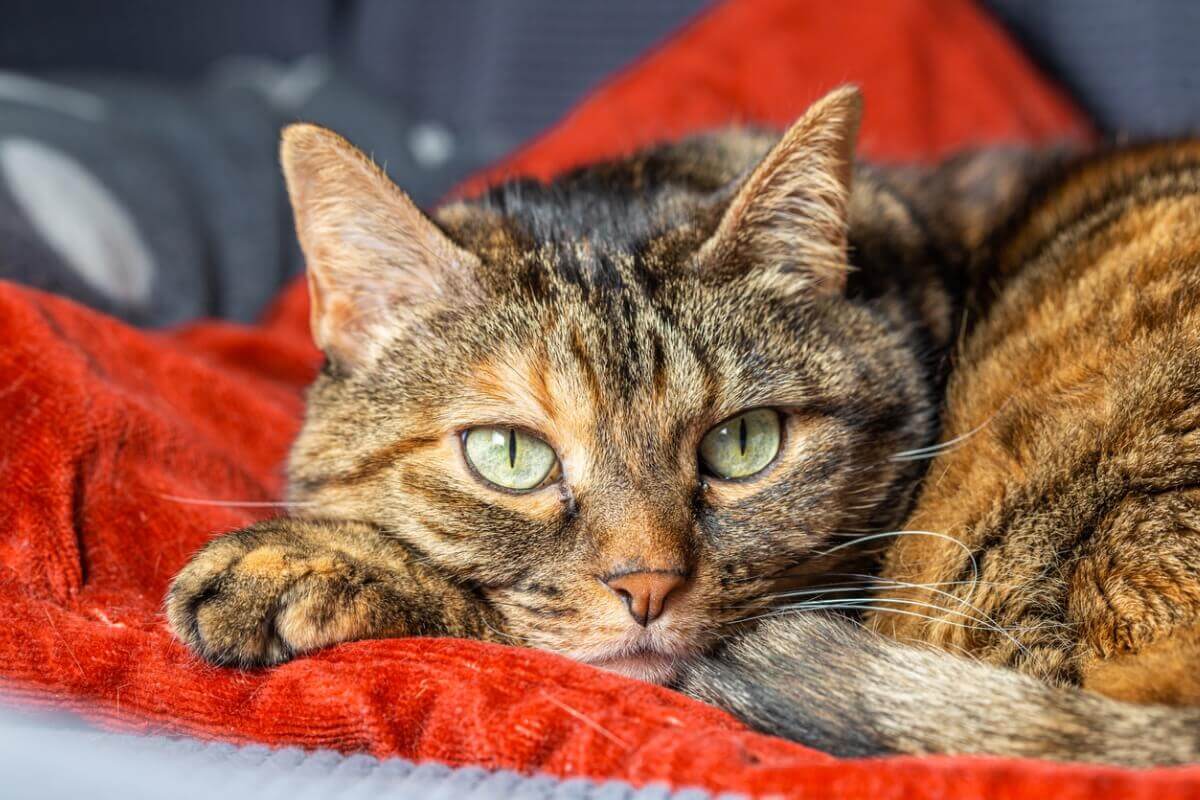When Do Cats Stop Growing?

No matter the size of your feline, it’ll always be a wonderful being who will fill you with joy and unforgettable moments. But when do cats stop growing? The answer to this question is a matter that every owner should know about in order to give our pets the best possible quality of life at each stage.
Each feline has a different pace of development, but worrying about their growth and life stages is important in order to supply the care required at all times and thus achieve full development even after they’re fully grown. Keep reading if you want to know more about it.
At what age do cats stop growing?
It’s believed that the domestic cat (Felis silvestris domesticus) originated from the wild cat (Felis silvestris), but the different crosses and the creation of new breeds have brought changes in their general characteristics. Nowadays, there are more than 40 breeds obtained from this species all over the world.
For this reason, professionals in the field say that the morphometry (size and shape) in domestic cats is a little-studied subject and there are no standard measures at a vital level for them. Each breed and individual has its own growth pattern, which is also subject to the care of the guardian and environmental conditions.
However, there are approximations that can be taken into account to know at what age cats stop growing. Cat Care for Life, for example, claims that these mammals are fully developed physically and behaviorally at approximately 3 years of age.
Other sources state that in the first to second year (junior stage) these mammals reach their full size. On the other side of the coin, experts say that most felines stop growing at 18 months.

When do cats stop growing according to their breed?
To define up to what age cats grow, it’s important to take into account factors such as sex and breed. The tabby, Siamese, and shorthair felines usually stop growing at 12 to 19 months of age. On the other hand, Savannahs and Bengals stop growing at 2 years of age, and Ragdolls and Maine Coons at 4 years of age.
How to know the age of a cat?
Felines mature much faster than people, but once they’re fully developed, their external appearance changes very little. They usually still look very young when they’re adults, and because of this, it can be very difficult to tell their real age.
Despite their youthful outward appearance, the inside of the cat does age. It’s much easier to understand how to manage the life, health, and behavior of felines if you associate their age to an equivalent of human years.
It has often been suggested that you only need to multiply the age of a cat by 7 to obtain a comparative human figure. However, this operation doesn’t take into account how kittens mature and age.
A much more appropriate method is to take the end of the first year of the kitty’s life as an equivalent of 15 human years. Then, the end of the second year is counted as a 24-year-old person, and from the following ages onwards, each year of a feline’s life is considered to be equivalent to 4 years in our species.
If the cat’s 3 years old, the equivalent will then be 28. If it’s 4, it’ll be 32 years old, if it’s 5, it’ll be 36, and so on. However, you should remember that this is only an estimate, as each feline (like each human) is a unique individual, and measures of maturation and aging vary.
The life stages of cats
There are 6 different life stages recognized in cats, which are based on how they mature and age both physically and behaviorally. These are as follows:
- Kitten (from birth to 6 to 7 months of age). At this stage, the mammal goes through more physical and mental changes than at any other time in its life. Therefore, it’s important to focus on your pet and take very good care of it at this stage to ensure a well-balanced, friendly and confident adult kitten.
- Junior (1 and 2 years). As with humans, adolescence or the junior stage can be a challenging time for cats. At this stage, most felines reach their full size and have already learned how to survive in their environment.
- Adult (3 to 6 years). At this stage, cats have already established their basic temperament and personality.
- Mature (7 to 10 years). Felines in the mature stage are the equivalent of a 40 to 50-year-old human. Therefore, they tend to be less active here than adult cats and may need special considerations based on physical problems.
- Senior (11 to 14 years). In their golden years, cats tend to sleep more, eat less, and aren’t as active.
- Elderly (15 years and older). At this stage, veterinary exams are recommended twice a year. Keeping your pet as comfortable and healthy as possible is of utmost importance so that he or she can leave in peace.
How long do cats live?
Cats tend to live for a long time because of their size. In general, smaller mammals have a shorter life expectancy, but cats are an exception. A lthough cats are smaller than most dogs, they generally live longer. The average life expectancy of a pet feline is 13 to 14 years.
However, although their life expectancy varies, a well-cared-for cat can live to 15 years or more. In any case, some make it to 18 or 20 and some extraordinary felines even reach 25 or 30 years of age.

As you know, you can’t determine how old cats will grow to be, as you must take into account factors such as their position on the birth line, diet, and genetics, among others. The best way to ensure that your pet goes through all stages of a happy and healthy life is to feed it a nutritious, well-balanced diet and provide plenty of exercise, attention, and love.
All cited sources were thoroughly reviewed by our team to ensure their quality, reliability, currency, and validity. The bibliography of this article was considered reliable and of academic or scientific accuracy.
- Cat Care for Life. (s. f.). Life stages | Cat Care for Life. Recuperado 11 de octubre de 2021, de https://www.catcare4life.org/cat-owners/lifestages/
- Guthrie, L. (2021, 24 abril). When do cats stop growing? Pumpkin®. https://www.pumpkin.care/blog/when-do-cats-stop-growing/
- Parés-Casanova, P. M., Salamanca-Carreño, A., Crosby-Granados, R. A., & Santos-Díaz, K. V. (2018). Crecimiento del gato doméstico mediante un modelo logístico. Revista de Investigaciones Veterinarias del Perú, 29(4), 1122–1128. http://www.scielo.org.pe/pdf/rivep/v29n4/a05v29n4.pdf
- Paws Chicago. (s. f.). How Cats Age | PAWS Chicago. Recuperado 11 de octubre de 2021, de https://www.pawschicago.org/news-resources/all-about-cats/kitty-basics/how-cats-age
